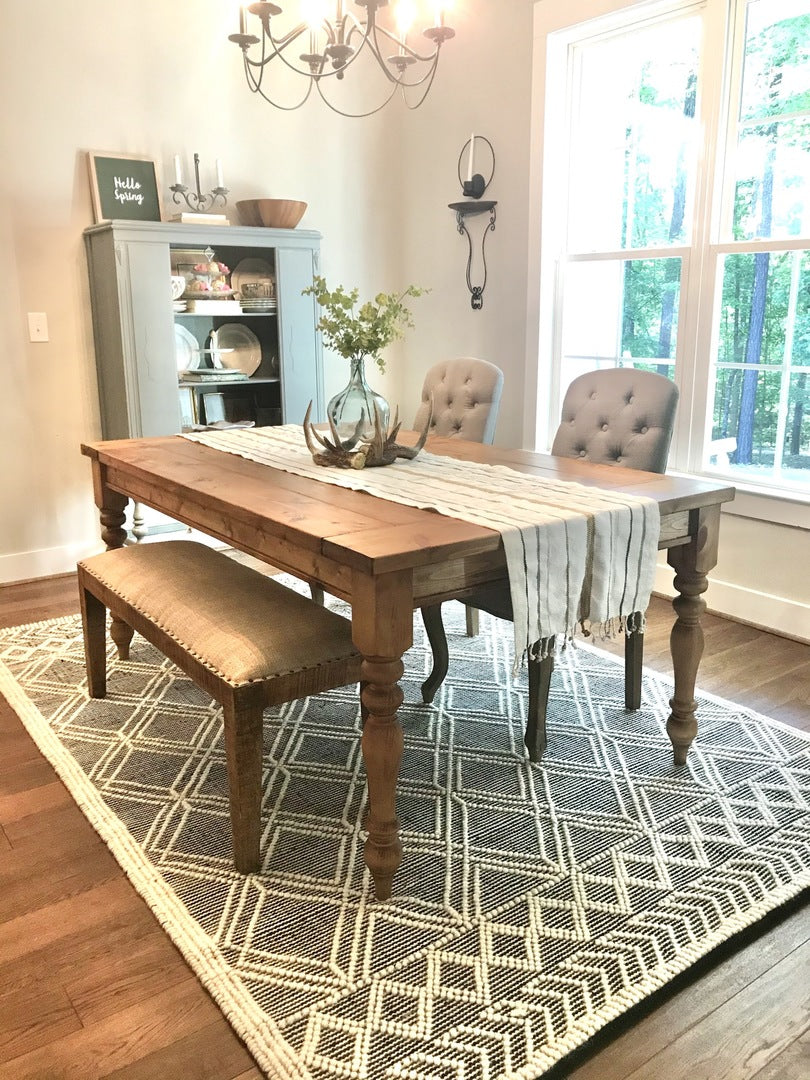One-of-a-kind Dining Room Table Legs to Transform Your Eating Area
One-of-a-kind Dining Room Table Legs to Transform Your Eating Area
Blog Article
An In-depth Take A Look At Table Leg Styles: Locating the Suitable Match
Picking the ideal dining table leg style is important for both aesthetic appeal and sensible performance. Conventional four legs supply ageless sophistication and stability, while the stand base offers increased legroom and a modern-day appearance. For those with bigger tables, trestle legs guarantee sturdy assistance, whereas hairpin legs present a mid-century contemporary vibe with their minimal style. The x-shaped legs blend modern design with improved stability. Each of these choices brings distinct advantages, making the option extra than simply an issue of preference. Check out further to find which style completely complements your dining room and way of living.
Typical 4 Legs
Among the various sorts of eating table leg styles, the conventional four-leg style continues to be a classic selection for many households. This traditional arrangement uses an unified mix of capability and visual appeals, making it a perennial favorite. Four legs provide balanced support, ensuring the table remains steady and qualified of birthing substantial weight. This is particularly helpful for families that often hold huge celebrations or use their eating table for multiple purposes, such as work or crafting.
From a visual point of view, the traditional four-leg layout can be conveniently adjusted to numerous interior styles. Whether crafted from timber, metal, or a combination of materials, these legs can be elaborately sculpted, sleek and minimalistic, or anything in between. Their flexibility enables them to complement both rustic and modern settings perfectly.
Furthermore, the simple structure of the four-leg layout facilitates simplicity of activity and placement within a room. Unlike more complicated bases, this style reduces blockages, supplying enough legroom for restaurants. In summary, the typical four-leg table leg design marries withstanding beauty with sensible capability, making it an astute selection for those looking for both form and function in their eating furniture.
Pedestal Base
Commonly celebrated for its stylish and space-efficient design, the pedestal base is a prominent option to the traditional four-leg setup in dining table leg styles. Without corner legs, diners are afforded greater flexibility of movement, making it an excellent choice for round and oval tables that promote more intimate and inclusive gatherings.
The main column itself supplies a canvas for detailed styles and imaginative expressions, adding an element of visual rate of interest underneath the table. In summary, the pedestal base integrates capability with design, making it an improved and practical alternative for diverse dining atmospheres.
Trestle Legs
Trestle legs supply a durable and timeless structure for dining tables, defined by their straight cross-bracing and sturdy support beam of lights. Stemming from middle ages times, this layout has actually advanced yet maintained its necessary structure, making it a perennial fave in both typical and contemporary setups. The main trestle beam, typically supported by 2 or more upright posts, offers extraordinary security, permitting larger table sizes without the need for extra legs.
A substantial benefit of trestle leg tables is the ample legroom they use. Unlike tables with 4 corner legs, the lack of blockages at the table's edges offers unobstructed room for chairs and diners, improving convenience and accessibility. This makes trestle tables suitable for accommodating bigger gatherings, whether in a dining-room or a reception hall.
The aesthetic flexibility of trestle legs is notable. Available in a range of products such as timber, steel, and composite, they can be finished to match a large range of indoor styles. From rustic farmhouse to sleek contemporary styles, trestle legs can be tailored to match specific tastes. Their long-lasting allure and useful go to my site benefits make trestle legs an engaging selection for those looking for both style and functionality in their eating table.
Barrette Legs

The charm of barrette legs exists in their simpleness and adaptability - dining room table legs. Available in a series of materials, including steel and brass, they can be finished in countless shades to enhance different indoor designs. Whether coupled with a rustic wooden tabletop or a contemporary glass surface, barrette legs easily blend performance with a touch of classic beauty
Durability is an additional notable feature of hairpin legs. Despite their delicate look, these legs are engineered to bear considerable weight, making sure the eating table remains secure and safe. Additionally, they are fairly simple to set up, making them a prominent selection for do it yourself lovers and expert furnishings makers alike.
X-Shaped Legs

Created that site from materials such as steel, timber, or a mix of both, X-shaped legs can be tailored to match different style choices. Steel legs frequently offer a sleek and industrial feeling, perfect for loft-style houses and modern-day dining areas. On the various other hand, wooden X-shaped legs provide a warmer, a lot more rustic allure, suitable for farmhouse or eclectic interiors. The adaptability in products permits property owners to personalize their eating tables to much better fit their overall layout scheme.
Additionally, the design behind X-shaped legs makes certain also weight circulation, decreasing the risk of wobbling and improving durability. This makes them particularly well-suited for larger table that require additional assistance. Essentially, X-shaped legs blend click now useful engineering with modern aesthetic appeals, making them an ageless option for diverse dining environments.
Verdict
A comprehensive understanding of dining table leg styles reveals the distinct characteristics and benefits of each style. Conventional four legs offer stability and timeless allure, while pedestal bases provide legroom and a streamlined look. Trestle legs make sure robust support for bigger tables, and barrette legs introduce a mid-century modern-day visual. X-shaped legs combine contemporary layout with improved stability. Picking the ideal leg design makes sure both useful and visual contentment in any type of dining room.
Report this page